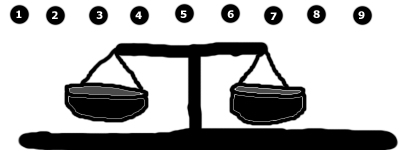There Are 9 Marbles

4 each bucket has enough room for multiple marbles.
There are 9 marbles. Math 10 points 1 there are 9 marbles representing 3 different colors. What is the fewest number of measurements you can make to figure out which is the light marble. 1 you have 9 marbles as seen. Write a problem where two marbles are selected at random without replacement and the probability is 1 6.
There are still 6 green marbles and 9 red ones. You have a balance that has 2. A marble is drawn at random from the jar. Write the probability as a fraction in simplest form a decimal and a percent.
There are 35 marbles in a bag. 9 blue marbles 8 green marbles 4 red marbles 8 white marbles and 6 yellow marbles. The remaining marble is slightly heavier than the others. Find the probability that the marble is blue or even numbered.
A number cube with the numbers 1 through 6 is rolled. 2 a company has determined that 2 of the pudding cups it produces are defective in some way. All you have is a scale and the marbles. There are 7 green 4 blue and 9 marbles in a box.
In other words you get to take 2 measurements or comparisons here. There are 9 marbles 1 lighter than the rest. So take the two groups aside and you left with 3 marbles and weigh them again and you find the result. There are 8 marbles that weigh 1 ounce each and 1 marble that weighs 1 1 ounces.
A marble is drawn at random and after recording its color the marble is returned in the box. You don t know which is which. If 9 marbles put them in 3 groups so each group has 3 marbles so only one group would have different weight than the other two group since there s only 1 marble is different than the others. Now we already know that one of the marbles is heavier than the rest.
The marbles are all uniform in size appearance and shape. Find p number is. After that we replace the green marble into the bag. A 4 31 0 129 12 9 b 4 35 0 114 11 4 c 1 7 0 143 14 3 d 3 35 0 086 8 6 2.
Another marble is then drawn. There are two variants of the same question the easier of the two has been stated here. So when comparing two groups of marbles there can be two outcomes 1. 4 25 first we have the probability of drawing a green marble as 6 out of 6 9 which is 6 15.
One of them weig. A jar contains 9 red marbles numbered 1 to 9 and 7 blue marbles numbered 1 to 7. At this moment the bag becomes the same as it is before a green marble is drawn i e. If we are too draw another green marble the same probability 6 15 will be resulted.
















































